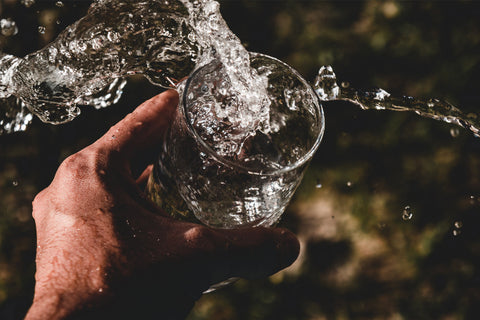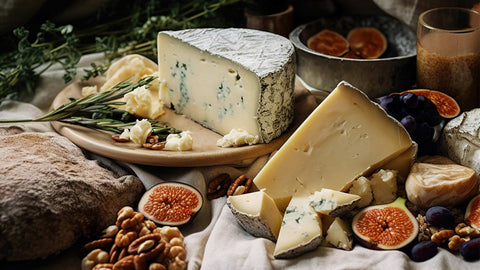Water is healthy—that never changes. It affects various functions of our body, from brain suspension to blood flow to the very texture of our skin. It is a necessity for survival set in stone. However, the way we perceive water and, consequently, its personal significance to us differs. Scarcity makes it precious; through traditions and rituals, it’s made sacred. The right TikTok video can cause a surge of popularity or spark discourse.
Just as water conforms to the glass that holds it, its shape shifts to the mind that contains it, changing from person to person, and throughout the course of a lifetime.
Early life
As children, water on a rainy day might mean a magical shower coming down from a grey sky. We might wonder why it’s crying, or enjoy without a care the cool pitter-patter of rain against our skin. There’s something about playing in the rain, making the same old games thrilling again. At the pool, there’s a whole new world underwater: blue-tinged and warped, like a fun house of mirrors. Water renders the body weightless—swimming becomes the closest we come to flying.
In a glass, water becomes one of many drinks, but not what a child reaches for to quench their thirst first. Juxtaposed against the likes of juice, flavored milk, and soda, water just has no appeal.
Water should be a child’s main drink, though milk, milk alternatives, and water-rich fruits and vegetables are also good sources of hydration. Sugary and caffeinated drinks should be limited, if not altogether avoided. While all these drinks count towards one’s daily water intake, there’s a clear hierarchy to be followed for the child’s health.
Children aren’t as likely to notice when they’re thirsty. Signs of dehydration—dry lips, sticky mouth, and dark-colored urine, to name a few—need to be watched out for. As children are still developing their understanding of the world, it falls on parents and guardians to guide them in these things.
It’s through exploration and with guidance that water first starts to take shape.
Adolescence to Adulthood
Eventually, we grow up and come to understand the inherent value of water and are better attuned to needs of our body such as thirst. It’s from here on that water develops meaning beyond mere nourishment.
Location, culture, profession, hobbies—such influences affect the way we regard water. Now, rainy days mean a slog to commute through, or a more peaceful rest enveloped in rain’s atmospheric ambiance. On outings, clear turquoise waters become an idyllic set piece for pictures, and a glass is now a preemptive balm for hangovers after a night of drinking. Even water flasks are more than simple vessels, becoming forms of self-expression shining through colors, stickers, and other accessories. The right brand can even earn clout.
Some put water itself on a pedestal. In active lifestyles, it’s needed to thermoregulate after the heat of exertion and replenish sweat. It’s even more vital to professional athletes as it enhances performance, their water intake calculated to prevent any percentage of dehydration to stay in top form. On a completely other part of the spectrum, beauty experts hail hydration as essential to the coveted glass skin. The beauty industry has it down to a science, as seen in the plethora of humectants, occlusives, and other moisture-centric ingredients in skincare and cosmetics.

Dehydration is a more common issue, but for these devotees of water—overhydrating is the greater concern. Also known as water intoxication, it causes a dangerous electrolyte imbalance. Symptoms range from headaches, nausea and vomiting to muscle weakness, spasms and cramps. The worst cases can lead to a coma, or fatal heart and nerve issues.
As we mature into adults, so does our sense of identity. We learn from failure and success, water, thus, taking on different forms as we refine it to a shape that best suits who we are.
Old Age
As we age, our physical senses dull, and remembrance slips through the cracks. Water is lost in the periphery regardless of the focus it once held in one’s prime.
Physically, this is due to our bodily functions diminishing with age, which includes a dulled sense of thirst. Dehydration becomes more likely—and more dangerous, as water is needed more than ever to sustain the elderly’s aging bodies. Like a reflection of childhood, they need to be reminded to drink water, and limited on the same sugary and caffeinated beverages.
It can feel restrictive. Unlike in their youth, the elderly have tasted much of life and know what freedoms and indulgences they like—the bubbly fizz of cool, refreshing soda on a summer day, a coffee mug warm between your hands as you sit with your partner at a beloved café, shots of alcohol simmering from a burning hit to a pleasant warmth in your chest and across your cheeks, laughing raucously with friends. There is a keen awareness of what lies out of reach.
We come full circle as water’s importance to physiological functions returns to the fore, aiding in slowing the body’s natural decline. It continues to support bodily functions—as it always has—such as digestive, urinary and kidney health, and metabolism. And as the brain is mainly composed of water, cognitive functions are sharper when brain cells receive appropriate hydration.
Through all its transformations, water remains a life-giving element at its essence—but it’s a choice whether to drink from that holy grail or another. Do you reach for a different glass, or mug, or bottle, to relive a moment of the faded past; or preserve, for a moment longer, the precious sense of self developed throughout life’s courses with a simple glass of water.




